How killer who went undetected for decades was caught
 Avon and Somerset Police
Avon and Somerset PoliceRyland Headley must have thought he had gotten away with murder until police came knocking on his door almost 58 years after his crime.
The violent death of Louisa Dunne, 75, at her Easton house in Bristol in 1967 sent shockwaves through her community and sparked a manhunt that saw palm prints taken from 19,000 men.
However, her killer slipped through the net. More than half a century later, he was living in the quiet market town of Ipswich, 200 miles from the murder scene.
But a marriage of old and new policing meant 92-year-old Headley has now been convicted of Mrs Dunne's rape and murder following a trial at Bristol Crown Court.
The jury's guilty verdict is believed to have set a new record for a conviction in a cold case, and as investigator Joanne Smith put it, is proof offenders "can never stop looking over their shoulder".
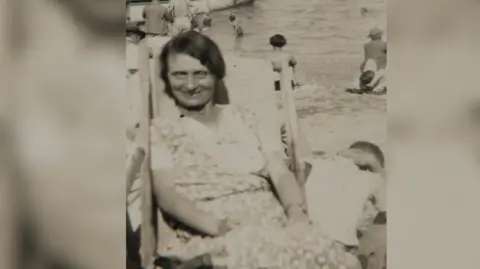 Family handout
Family handoutBefore her death, Mrs Dunne had been twice widowed and was living alone in Britannia Road, Easton. She was frail, stood at just 5ft 3in (1.6m) and weighed less than seven stone (44kg).
She was a fixture in her neighbourhood, and was often to be found at her front door chatting with acquaintances or watching the world go by.
Neighbours soon realised something was wrong on the morning of 28 June 1967 when she had not collected the newspaper left daily for her on her front garden wall.
She was later found in her front room, laying on her back, clothed but with her underwear around her ankles.
Bruising to the neck indicated she had been strangled with her scarf, and something heavy had been held over her mouth.
A swab tested positive for semen. But beyond this, police had very little forensic evidence. All they found was a narrow section of a left palm print, the area beneath the little finger, on the frame of an upstairs sash window.
Over the next year, police took the palm prints of every male between the ages of 15 and 60 within a 1.5 mile (2.4km) radius of Mrs Dunne's home, as well of all those convicted of burglary or a sexual offence.
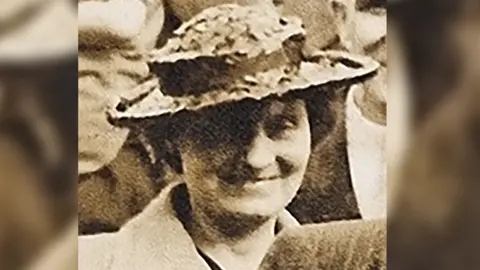 Family handout
Family handoutHomeless people were screened, as were any soldiers absent without leave on 28 June 1967. Detectives made 8,000 house-to-house enquiries and about 2,000 witness statements were taken.
It later transpired Headley was living 1.6 miles (2.6km) away, on Picton Street in Montpelier, which was just outside of the police's catchment. At the time, he had no previous convictions.
Ultimately the trail went cold, but fast forward 10 years and another manhunt was under way - this time in Ipswich, following the rapes of two elderly women, aged 84 and 79, in their homes at night.
One described the terror of being woken by a man crawling across her bedroom floor and threatening to kill her.
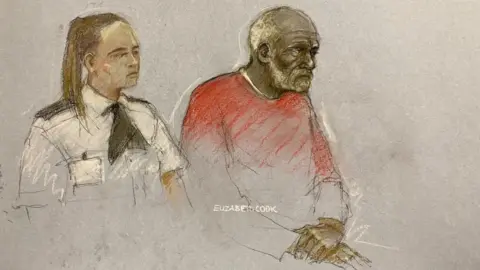 Elizabeth Cook/PA Media
Elizabeth Cook/PA MediaThis time, 5,000 men were fingerprinted in the space of a month - and Headley was caught.
He pleaded guilty to both rapes, and asked for 10 other burglary offences to be taken into account when he was sentenced.
Headley's modus operandi was always the same - he targeted the homes of elderly or middle aged women living in the same area, which "indicated he had considerable local knowledge," according to one contemporary press report.
But with no national computerised database to swiftly compare records, the connection was never made to Mrs Dunne's killing.
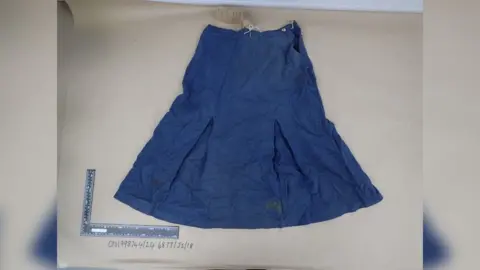 Avon and Somerset Police
Avon and Somerset PoliceBoxes and boxes of evidence from the original police investigation remained in storage, until Ms Smith of Avon and Somerset Police's major and statutory crime review team took a fresh look in 2023.
"Murder and rape is the most horrific crime anyone can commit against another person and I think time makes no difference for us. We will keep searching and searching," she said.
Ms Smith said she was amazed how well key evidence, such as Mrs Dunne's clothing and samples of pubic hair had been preserved, as well as all the crime scene photographs and the thousands of pages of statements.
It was forensic scientist Andrew Parry, of Cellmark Forensic Services, who established a definitive DNA link to Headley.
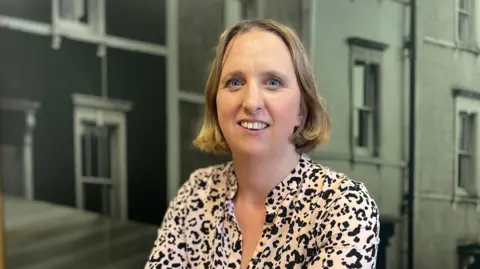
Mr Parry cut a square of cloth from the back of Mrs Dunne's skirt, having assessed the position she was found in and realised that, if semen had been left behind, it would be on that section of the fabric.
"Semen that is deposited on clothing can persist for a long time," Mr Parry said during his evidence in court.
"If you wash it thoroughly, you may get rid of it, but it may persist even if you wash it. It can last for many years."
'Goosebump moment'
Mr Parry told the jury it was a "billion times" more likely the sperm cells originated from the defendant than from anyone else.
Headley had been questioned in 2012 and a DNA sample taken following an alleged assault for which he was never charged, but he avoided giving a palm print by telling officers he had arthritis.
Ms Smith described the "goosebump moment" when she learned the skirt had yielded a full DNA profile and the suspect was still alive.
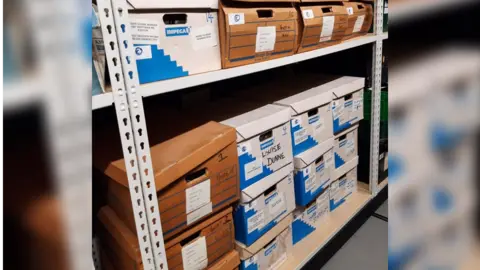 Avon and Somerset Police
Avon and Somerset Police"The skirt had been hiding all these secrets for 57 years," she said.
Despite the DNA link, the team - which only has nine members - still had a huge mountain to climb before Headley could be charged.
They had to prove definitively that he had lived in Bristol, and bring a wealth of supporting evidence to allow the Crown Prosecution Service to take the case forward.
Conscious that, due to Headley's age, they might only have limited time to bring him to justice, the team put "all hands to the pump" to scour the police statements and Bristol City Council records to build their case.
When Headley was arrested, the team had no trouble taking a palm print, Ms Smith said.
"It makes me wonder if he knew he didn't want his palm print taken," she said.
"Certainly the press at the time were well aware the palm print was the main focus of the investigation - it's likely that he would have been aware that his palm print would have implicated him."
She added: "It's satisfying to know what started off as a dusty old box in our archive store has ended up with justice being served and Headley getting what he deserved, which is the inside of a prison cell."
Ms Smith said Headley showed little emotion during arrest or interview.
"We are still no closer to understanding him or what drove him to do what he did," she said.
"He's a vulnerable, weak old man," she added. "But we are talking about when he was in his 30s and 40s.
"If you read the accounts of the women he attacked in the 1970s it gives you an account of the terror he inflicted on his victims."
Headley is set to be sentenced on Tuesday.
Follow BBC Bristol on Facebook, X and Instagram. Send your story ideas to us on email or via WhatsApp on 0800 313 4630.
